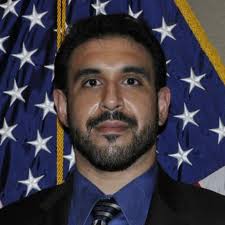JSON
See the following -
An Introduction to Libral, a Systems Management Library for Linux
 Linux, in keeping with Unix traditions, doesn't have a comprehensive systems management API. Instead, management is done through a variety of special-purpose tools and APIs, all with their own conventions and idiosyncrasies. That makes scripting even simple systems-management tasks difficult and brittle. For example, changing the login shell of the "app" user is done by running usermod -s /sbin/nologin app. This works great until it is attempted on a system that does not have an app user. To fix the ensuing failure, the enterprising script writer might now resort to...
Linux, in keeping with Unix traditions, doesn't have a comprehensive systems management API. Instead, management is done through a variety of special-purpose tools and APIs, all with their own conventions and idiosyncrasies. That makes scripting even simple systems-management tasks difficult and brittle. For example, changing the login shell of the "app" user is done by running usermod -s /sbin/nologin app. This works great until it is attempted on a system that does not have an app user. To fix the ensuing failure, the enterprising script writer might now resort to...
- Login to post comments
Bossies 2012: The Best Of Open Source Software Awards
Welcome to the sixth annual Best of Open Source Software Awards, otherwise known as the Bossies. If you've enjoyed our previous Bossies, you're in for a treat... Read More »
- Login to post comments
Cernering the Market
 After years of speculation and rumors, in a move that surprised absolutely no one, Veterans Affairs Secretary David Shulkin announced that the Department of Veterans Affairs is moving to Cerner Millenium to replace its home-grown VistA electronic health record. On the surface this makes sense, because of DoD’s move to Cerner in 2015 and an overarching VA desire to move from custom software to COTS software. However, SecVA’s decision is only the beginning of an extremely long path, as DHA is finding with its MHS GENESIS project. Moreover, VA has a broader scope than DHA. Unlike DHA, whose primary goal is to provide a medically ready fighting force, VA handles a slew of additional tasks, including...
After years of speculation and rumors, in a move that surprised absolutely no one, Veterans Affairs Secretary David Shulkin announced that the Department of Veterans Affairs is moving to Cerner Millenium to replace its home-grown VistA electronic health record. On the surface this makes sense, because of DoD’s move to Cerner in 2015 and an overarching VA desire to move from custom software to COTS software. However, SecVA’s decision is only the beginning of an extremely long path, as DHA is finding with its MHS GENESIS project. Moreover, VA has a broader scope than DHA. Unlike DHA, whose primary goal is to provide a medically ready fighting force, VA handles a slew of additional tasks, including...
- Login to post comments
Data Exchange Vendor Metriport Adopts Open Source
 Metriport is addressing a problem similar to other IT companies in health care—a service to ingest and clean patient data for tasks such as providing care summaries during a patient transition—but is doing so in a very unusual way: through an entirely open source service. Because the choice to go open source is so central to their business model, I will discuss the importance of free and open source software in health care, then explain Metriport's service.
Metriport is addressing a problem similar to other IT companies in health care—a service to ingest and clean patient data for tasks such as providing care summaries during a patient transition—but is doing so in a very unusual way: through an entirely open source service. Because the choice to go open source is so central to their business model, I will discuss the importance of free and open source software in health care, then explain Metriport's service.
- Login to post comments
Defining An Open Platform for Health IT
 It is widely agreed that the future of digital health lies in an “Open Platform”. However, it’s not clear as to exactly what an Open Platform is or how we get there. This blog aims to answer the first question and to provide some guidance on the second. While any given instance of an Open Platform will be a specific implementation of a set of software components owned and operated by a particular organisation (this might be a health and social care organisation or a third party, operating the platform on behalf of a local health and care community), it is most usefully defined by a set of principles rather than the specific details of a particular implementation.
It is widely agreed that the future of digital health lies in an “Open Platform”. However, it’s not clear as to exactly what an Open Platform is or how we get there. This blog aims to answer the first question and to provide some guidance on the second. While any given instance of an Open Platform will be a specific implementation of a set of software components owned and operated by a particular organisation (this might be a health and social care organisation or a third party, operating the platform on behalf of a local health and care community), it is most usefully defined by a set of principles rather than the specific details of a particular implementation.
- Login to post comments
EWD.js and VistA: Now With No Barriers to Entry
Over the past few weeks I’ve been busy. Before explaining what I’ve been busy doing, I’ll start by stating my sincere thanks to Christopher Edwards (KRM Associates and Certification Manager at OSEHRA) for enhancing and extending his installer for VistA to include an option to automatically install, configure and fire up EWD.js. Read More »
- Login to post comments
How Time-series Databases Help Make Sense of Sensors
 Infrastructure environments' needs and demands change every year and systems become more complex and involved. But all this growth is meaningless if we don't understand the infrastructure and what's happening in our environment. This is where monitoring tools and software come in; they give operators and administrators the ability to see problems in their environments and fix them in real time. But what if we want to predict problems before they happen? Collecting metrics and data about our environment gives us a window into how our infrastructure is performing and lets us make predictions based on data. When we know and understand what's happening, we can prevent problems, rather than just fixing them...
Infrastructure environments' needs and demands change every year and systems become more complex and involved. But all this growth is meaningless if we don't understand the infrastructure and what's happening in our environment. This is where monitoring tools and software come in; they give operators and administrators the ability to see problems in their environments and fix them in real time. But what if we want to predict problems before they happen? Collecting metrics and data about our environment gives us a window into how our infrastructure is performing and lets us make predictions based on data. When we know and understand what's happening, we can prevent problems, rather than just fixing them...
- Login to post comments
Interoperability Headaches in Fitness and Medical Devices
The promise of device data pervades the health care field. It’s
intrinsic to patient-centered medical homes, it beckons clinicians who are enamored with hopes for patient engagement, and it causes data analysts in health care to salivate. This promise also drives the data aggregation services offered by Validic and just recently, the Shimmer integration tool from Open mHealth. But according to David Haddad, Executive Director and Co-Founder of Open mHealth, devices resist attempts to yield up their data to programmers and automated tools.
- Login to post comments
Notes on the October Joint Meeting of the Standards and Policy Committee
Today the future of interoperability was discussed and endorsed by a joint meeting of the Standards and Policy Committees. We began with a preamble clearly stating that the roadmap we’re working on is a process not a finished product. Karen DeSalvo, Jacob Reider, Paul Tang and I offered framing comments for the day... Read More »
- Login to post comments
Percona Announces Speakers, Tutorials and Sponsors for Percona Live Open Source Database Conference Europe 2017
 Percona, the company that delivers enterprise-class MySQL®, MongoDB® and other open source database solutions and services, today revealed the initial roster of speakers, tutorials and sponsors for Percona Live Open Source Database Conference Europe 2017, taking place September 25-27, 2017 at the Radisson Blu Royal Hotel in Dublin, Ireland. The special Early Bird registration discount rate is only available until August 8, 2017, and a special room rate at the Radisson Blu Royal Hotel expires on August 14, 2017. Sponsorship opportunities are still available...
Percona, the company that delivers enterprise-class MySQL®, MongoDB® and other open source database solutions and services, today revealed the initial roster of speakers, tutorials and sponsors for Percona Live Open Source Database Conference Europe 2017, taking place September 25-27, 2017 at the Radisson Blu Royal Hotel in Dublin, Ireland. The special Early Bird registration discount rate is only available until August 8, 2017, and a special room rate at the Radisson Blu Royal Hotel expires on August 14, 2017. Sponsorship opportunities are still available...
- Login to post comments
Share Your Genetic Story with openSNP
With personal genomics services like 23andMe and deCODEme, we can ship away a cotton swab with some spit on it, and explore our genetic connections even more closely. If we open up and share that genetic data with one another, there's a lot we could discover about human phenotypes: how our height, eye color, and preferences for certain foods connect us and shape our lives and health. Read More »
- Login to post comments
Standards and Open Source Make Advances in Apps and Data Exchange for Health
I try to be optimistic about health care, and I managed to move my mood meter in that direction last month after talking about advances in data sharing, standards, and interoperability with a few people involved in the open FHIR standard: Grahame Grieve from the Core FHIR Development Team, David Hay from the FHIR Management Group, and Josh Mandel, a research scientist working on the open-source SMART Platform. Read More »
- Login to post comments
Taking Stock: Interoperability and National Health IT Week
During a two-hour panel discussion hosted by ONC this week, yours truly provided views on the current state of interoperability. In celebration of National Health IT Week, panelists were asked to provide their thoughts on the biggest advancements made in interoperability, ways that government and industry should work together, and concerns about future challenges...
- Login to post comments
What Can You do with Open Data?
 Play a word association game and the word "open" will almost surely be followed by "source." And open source is certainly an important force for preserving user freedoms and access to computing. However, code isn't the only form of openness that's important. Open data has been discussed for at least a decade. At the OSCON conference in 2007, Tim O'Reilly kicked off a bit of a ruckus when he suggested that open data might actually be more important than open code. Open data in this context mostly referred to the ability to export the user-created "Web 2.0" data, which was becoming important at that time. Tim Bray, then at Sun Microsystems, highlighted the issue when he wrote...
Play a word association game and the word "open" will almost surely be followed by "source." And open source is certainly an important force for preserving user freedoms and access to computing. However, code isn't the only form of openness that's important. Open data has been discussed for at least a decade. At the OSCON conference in 2007, Tim O'Reilly kicked off a bit of a ruckus when he suggested that open data might actually be more important than open code. Open data in this context mostly referred to the ability to export the user-created "Web 2.0" data, which was becoming important at that time. Tim Bray, then at Sun Microsystems, highlighted the issue when he wrote...
- Login to post comments
What is openEHR and why is it important?
 NHS Wales Informatics Services has been carrying out a technical evaluation into openEHR to test its viability as a repository for structured clinical data. The technology will be rolled out soon to support national projects such as Accelerating Cancer and to provide a shared medications record for NHS Wales. openEHR...offers a specification for a vendor neutral approach to open standards based clinical models and software. On top of this, we can build digital patient records and applications. And as it is a specification, openEHR based tools and repositories are available from several vendors but importantly, they all promise compatibility with each other's products. This means data held in one openEHR Clinical Data Repository (CDR) can be surfaced in a variety of places, natively supporting federated approaches for stakeholder organizations.
NHS Wales Informatics Services has been carrying out a technical evaluation into openEHR to test its viability as a repository for structured clinical data. The technology will be rolled out soon to support national projects such as Accelerating Cancer and to provide a shared medications record for NHS Wales. openEHR...offers a specification for a vendor neutral approach to open standards based clinical models and software. On top of this, we can build digital patient records and applications. And as it is a specification, openEHR based tools and repositories are available from several vendors but importantly, they all promise compatibility with each other's products. This means data held in one openEHR Clinical Data Repository (CDR) can be surfaced in a variety of places, natively supporting federated approaches for stakeholder organizations.
- Login to post comments